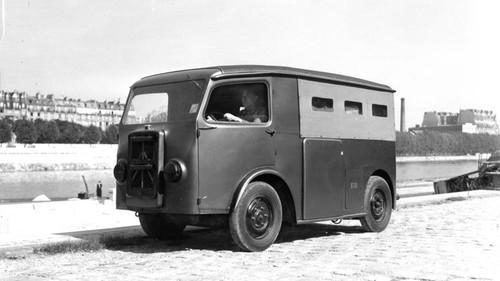2019. It is the year that Citroën celebrates the centenary. The French car manufacturer started an illustrious history of 100 years ago with the introduction of the 10 HP Type A. Soon there were variants in the price lists that were targeted by representatives and other small self-employed people: the company cars. Citroën pays attention in two parts to the other branch of sport in which it developed a lot of activity in 100-year history: the construction of functional cars for entrepreneurs.
Not only entrepreneurs knew early on with company cars that were adorned with the double chevron. The army also set the Citroëns in. A special vehicle of the French was the Autochenille, the half-track vehicle that was developed by the Frenchman Adolphe Kégresse when he was responsible for the fleet of the Russian tsar. The car chenilles gained a strong reputation, certainly when they turned out to be suitable for transport in the snow and on other soft surfaces.
Around the world
This became the most famous Citroën however, thanks to the 'croisières' that were organized on different continents in the years '20 and' 30: in Africa, Asia and Canada up to the South Pole. The famous American White Half-Track, the half-track vehicle that was used during the Second World War, also Citroën based. Eventually there were around six thousand Citroëns Autochenille built to transfer its production in 1937 to the French truck manufacturer Unic.
More variation options and delivery options
After the primordialCitroën, the Type A, came the B2 van and the slightly heavier B5. There was a choice of different bodies: closed, semi and fully open vans. The C4 Voiture de Livraison was an example of this. The small C4 Fourgonette was another important loot to the company car trunk Citroën from the past. In fact, this was the contemporary courier car avant la lettre, because it was regularly used for delivery services. Furthermore, the types were 29 and 45 in the 1930s Citroënstrong holders within the market for larger and heavier transport vehicles.
Technical breakthrough: the TUB
In the (still unknown) run-up to World War II, the designers worked on Citroën a new concept for vans. The renowned TUB emerged from it and was introduced. Just like the Traction, the model was equipped with a front-wheel drive. In addition, it turned out Citroëns progressiveness also from other applications. The TUB was equipped with a front steering cabin and a large loading space, partly due to the design of the front.
TUB: many years of example
Regardless of the drive: the configuration of the above-mentioned cab in particular, in combination with the payload, had been an example for many post-war vans. One Ben Pon, for example, sketched the Volkswagen Van. Chenard & Walcker drew their inspiration for the D3 and D4 bodies partly from the TUB. This one Citroën Due to the outbreak of hostilities, he was not able to prove himself in terms of sales on the private market, but as an army ambulance he was deployed by both camps. And as I said, the concept proved itself later, because this customer found a lot of followers.
Dealing with scarcity creatively
In the 1939-1945 period, the production of commercial vehicles was the most important branch of sport Citroën, forced to do so to the occupier. Up to the Eastern Front the Citroëns deployed. At the beginning of the war, a special version of the Laffly W15T was assembled for the French army, a three-axle that we can best describe as a large-sized jeep. But after bombing the Citroënproduction in the Javel district of Paris was stopped. The trucks of the 23 and 45 types that still left the assembly line during this period were sometimes fitted with gas generators, in which wood and coal produced an easily flammable gas that replaced the scarce gasoline. Technicians from NV Automobiles Citroën developed an ingenious system in Amsterdam, in which city gas could replace the diesel fuel.
The future after the war
After the war, a new episode broke in Citroëns commercial vehicle construction. It became the period of the Citroën H-types, the 2 CV order versions, the Acadiane, and other commercial vehicle applications based on passenger car models, such as the Ami Service, the GS Service and the ID / DS Break models, which were used for countless business and service purposes. The post-war commercial vehicle history of Citroën do you like our credit, which is described in the second part of the diptych.
Source: Citroën Communicatie and Wouter Jansen
Edited: Auto Motor Klassiek, Erik van Putten









It is often forgotten that the traction avant commercial was also widely used by agriculture and horticulture, brewer of wine and beer, and livestock farmers.
for information for TUB enthusiasts,
During the 25e CitroMobile fair 4 and 5 in May, the only 2 Dutch TUBs will be exhibited. A unique opportunity to admire them up close.
Great this fact about this often unknown and forgotten side of Citroën.
Many people think that the T1 / 'Bulli' (and the Beetle) was a unique and self-invented design, because nobody knows (yet) about the TUB ...
'Better stolen well than badly made up'